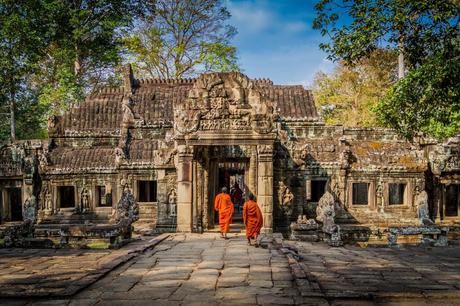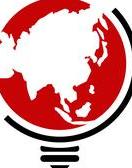
Cambodia is a simple destination to visit, but knowing a few basics beforehand can assist you in navigating the snags and traps that frequently snag visitors on their first visits. Cambodia's tourism industry is expanding. In 2018, over 6 million tourists visited Cambodia, which was up by double digits over the previous year.It may not sound like much, especially when Cambodia's population was estimated to be 16.2 million in 2018. Many of these international visitors continue straight to Angkor Wat near Siem Reap.
You should also be aware of Cambodia's struggle to recover from decades of war and bloodshed, in addition to practical information on visiting the country. For a moving, first-hand account of the atrocities Cambodia experienced not long ago, get a copy of Loung Ung's book First They Killed My Father. Instead of comparing the infrastructure to that in Thailand-a bigger, never-colonized neighbor-be amazed at what Cambodia has achieved.
Cambodia's Troubled History
Cambodia, formerly the Khmer Empire's capital, has been badly battered in the last 500 years. Despite being the most powerful country in the region for centuries, Cambodia was absorbed by Ayutthaya (modern-day Thailand) in the 15th century. Various conflicts have occurred throughout or around Cambodia since then, resulting in an abundance of orphaned children, land mines, and unexploded ordnance.
A real problem of corruption arose alongside a mending economy and significant poverty.Many tourists who start their Southeast Asia journey in Thailand make the error of comparing Cambodia's infrastructure, cuisine, and other aspects of society to what they saw in Thailand.
In Cambodia, Angkor Wat is the most famous ancient monument
The ancient ruins of Angkor temples dating from the 12th century are the jewel in Cambodia's crown for tourism. Angkor Wat is regarded as the world's largest religious monument, and it was even featured on Cambodia's flag until 2004. The vast Khmer Empire capital of Angkor was located near present-day Siem Reap and dominated between the 9th and 15th centuries before being destroyed in 1431. Today, Angkor Wat is one of Southeast Asia's greatest UNESCO World Heritage Sites, and it is protected by Cambodian law.The bas-reliefs and sculptures depict mythology in a remote part of the country, giving a tiny look at the ancient Khmer civilization. Despite its colossal nature, the site is continuously crowded-particularly during peak season between November and April. Fortunately, intrepid travelers still have the choice to visit several unrestored temples outside of the principal place.
Getting to Cambodia
Cambodia has about a dozen overland border crossings with Thailand, Laos, and Vietnam. However, the simplest way to get to Cambodia is by air, either to Siem Reap or Phnom Penh. Bangkok and Kuala Lumpur have plenty of cheap flights..
Flights into Siem Reap are generally the fastest and most affordable way to reach the temples, but they tend to be more expensive compared to the limited time spent in the air. There is a bus connection between Phnom Penh and Siem Reap (5-6 hours), as well as a speedboat service.
Requirements for a Cambodia Visa and Enquiries Concerning the Issue of Entry Visas
A 30-day visa on arrival may be obtained online before traveling to Cambodia through the Cambodian e-visa website. On arrival at the airport in Siem Reap or Phnom Penh, foreigners from a variety of acknowledged countries can obtain a 30-day visa. While border crossings where visa on arrival is available include some major land borders, not all of them do.
Some of the oldest scams in Southeast Asia target travelers entering Cambodia. On occasion, visa application costs may be adjusted by border officials at the last minute; all like it if you pay using US dollars. If paying in Thai baht, make sure you're receiving the correct exchange rate and wait for the official entry charge. Your change will be returned in Cambodian riels and subject to the exchange rate set by an official's head. It is preferable to pay the specified amount if possible.
Money in Cambodia
The official currency in Cambodia is the Cambodian riel (KHR), although American dollars are widely used and accepted. In certain instances, however, dollars are preferred, and they may be used interchangeably. In cities and tourist destinations, you'll see prices quoted in dollars. Thai baht is occasionally utilized in rural areas near the Myanmar and Lao borders.
At all times, try to carry smaller Cambodian riel and US dollars. Keep track of your change! Your money should be in decent shape with no tears or significant damage. You'll usually get change back in riel rather than U.S. coins, thus you'll have to keep an eye on whatever rate is determined for each transaction.
ATMs are available in every major city and town in Cambodia, with the most frequent networks being Cirrus, Maestro, and Plus. You may expect to pay a service fee of up to $5 per transaction above what your bank charges. Only large hotels and certain travel agencies accept credit cards in Cambodia. It's always better to use cash (card skimming is common) and avoid ATMs outside of banks' branches whenever possible.
Haggling is a common practice in Cambodia, like most of Asia. It's possible to negotiate the cost of virtually anything from trinkets to hotel rooms. Before leaving the country, make sure you spend your Cambodian rials since they can't be changed into other currencies. Outside of Cambodia, the riel has little value.
When to Visit Cambodia
Cambodia is divided into two seasons: dry and wet. You will seldom feel chilly in Cambodia unless the air conditioner is to blame. The dry season, which runs from November to April, is when tourists flock to Cambodia. In April, temperatures can reach up to 103 degrees Fahrenheit! The rain starts sometime in May or June after the peak months to let things cool down. Heavy monsoon rains cause a lot of mud and road closures; they also contribute significantly to the mosquito problem.
The best months to visit Angkor Wat are also the most popular, owing to the number of sunny days. January is typically the month with the fewest rainy days.
Cambodia Travel Tips
- It's best to avoid asking or addressing inquiries that might make the locals feel uneasy. War, politics, the Khmer Rouge, land mines, and other subjects that may bring up unpleasant recollections are all examples of delicate issues.
- Don't contribute to the problem by ignoring harmful traditions such as children begging or children selling souvenirs to tourists. Insects, shells, and wildlife shouldn't be bought as souvenirs; they cause environmental harm. Sustainable travel is especially necessary in Cambodia.
- The drinking water in Cambodia is not safe to consume. Bottled water can be found nearly everywhere, and it's a good idea to check the seal before using it.
- Because marijuana is so simple to come by (you can get it on pizzas in Siem Reap), all narcotics are banned in Cambodia, just as they are in Thailand..
- Petty theft (usually via motorcycle bag snatching) may be an annoyance in Cambodia. While riding in tuk-tuks, keep your phone away from your pocket and beware of your handbag or daybag.
- Angkor Wat is still a religious site used by worshippers while they are occupied with tourism. You will see many monks there. Prepare properly and obey the usual rules of temple etiquette.
- In 2017, the entrance fees to Angkor Wat increased significantly. You may now pay for passes by credit card at the ticketing desk (hours: 5:30-5 p.m.). You'll need a single passport photo.

